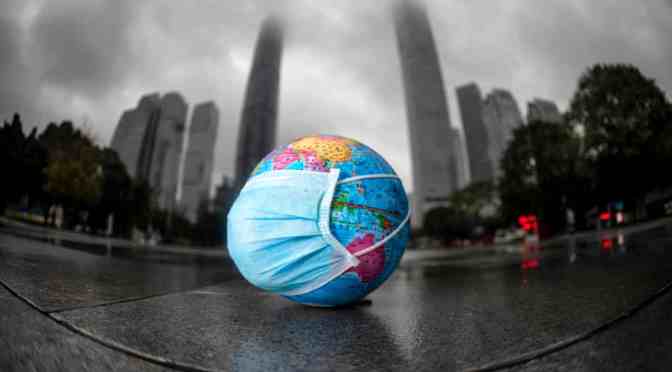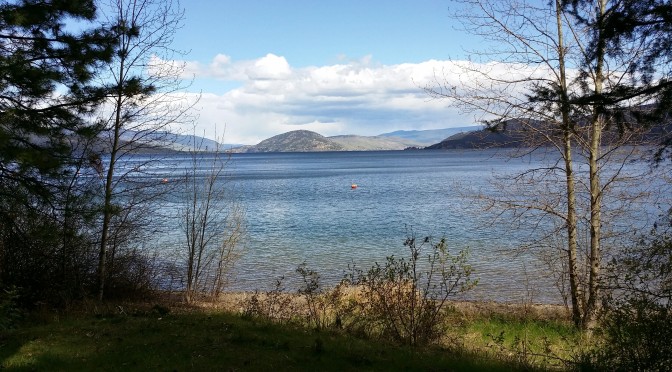This post is inspired by a short conversation I had months ago about climate change. It went something like this:
- Hello passerby, do you want to learn more about sustainability?
- Passerby: why yes, I am very interested in that topic. I always keep a clean house, I compost so I don’t waste food, I ride my bike as much as possible, and I use organic products, so I am definitely living sustainably.
- Me: that’s interesting and very commendable! Have you thought about how you can contribute to the cause?
- Passerby: well, I feel like I’m doing everything I should, and if everybody lived the way I do, we’d all be better off, but I can’t tell other people how to live. Besides, all that stuff about climate change just doesn’t seem to be based on fact.
Since ‘the great hunkerdown’ began, I’ve been thinking about this point of view alot. I see similar, if more extreme, ideas being circulated in the media. There’s an invisible line drawn between ‘my world’ and ‘what I’m responsible for’ and ‘the world of others’ and ‘what they are responsible for’. An individualistic approach to problems is our reflexive reaction in the Anglo settler countries of the developed industrialized world. Individualistic liberalism dictates that the line of ethical responsibility for others is determined by each person, as they make free decisions based on their own values and interests.
There’s something to be said for the power of this idea and its influence on liberal culture. After all, it is liberalism which first originated the modern language of rights and constructed a political space for imagining an ethic of agency which has been highly effective, at least within its own parameters.
It is appropriate to imagine that collective problems can be solved by individual action, indeed it is difficult to imagine how any progress can be made absent people ‘buying in’ to it, for example by changing their own consumption patterns.
Those countries around the world that ignored individual freedoms in favour of panicked enforced lockdowns in response to the pandemic will likely pay a high price in legitimacy, which will be costly in the end. Those countries that have enjoined their populations to ‘do the right thing’ have implicitly drawn on people’s genuine fears of their own contagion rather than a commitment to civic duty.
In the developed world, we should all pay deep respect and homage to the Italians for their sacrifice in helping us to learn that we were vulnerable. However, those countries that have relied almost exclusively on fears, without any reference to civic duty, have fared even worse than Italy, because in a liberal culture the absence of a sense of civic duty means that individual freedoms end up trumping everything else. Now more than ever, the paradoxical nature of individual freedom, based on a confident sense of security and separateness, is being laid bare.
It is liberalism which first originated the modern language of rights and constructed a political space for imagining an ethic of agency which has been highly effective, at least within its own parameters.
The gaps and limits of liberalism are being made visible, even obvious, as the logic becomes extended to its absurdities and extremes. Why not me first? Why care about others, isn’t that their job? My house is in order, I am healthy, I am reducing my footprint, I’m doing the right thing, I’m not the threat, why do I have to pay a price?
A really clear gap of liberal culture as it lives today, is its lack of any distributional ethics. Liberal thinking is essentially blind to the question of how security, or any other value, should be distributed. Since the only value worth distributing is individual freedom, and the only way to measure it is by each persons’ values and preferences, there is little to no room for considering exactly how equitable social distribution might actually work to enhance individual freedoms. The idea that each person’s freedom will be enhanced when decisions are made equitably, with the collective interest in mind, is alien and foreign.
The passerby who cares deeply about the cleanliness of her own household, and believes she alone deserves the benefit of her efforts, is blind to the myriad ways in which her choices are supported by the collective decisions of the past (and the present) that have made those choices possible. Indeed, the entire institutional structure of individual choices enjoyed today by those who most strongly defend their ‘freedoms’ has been made possible by the collective decisions of societies in the past (not by individuals). Ultimately, in history, it is only collective action that lasts, since the length of individual lifetimes is too short for leaders to see their ideas become permanently embedded. Thatcher had it exactly wrong: it’s not that there is no such thing as society, in the end there is only society.
Ultimately, in history, it is only collective action that lasts, since the length of individual lifetimes is too short for leaders to see their ideas become permanently embedded. Thatcher had it exactly wrong: it’s not that there is no such thing as society, in the end there is only society.
The cracks in this edifice are showing. The maldistribution of security, including the inequitable distribution of (in)vulnerability, is becoming glaringly obvious. The invisible line between ‘immunity’ and ‘vulnerability’ is being revealed for what it is: a collective construction. Immunity/vulnerability is a paradox. Immunity is always dependent, derivative of the vulnerability of and to others. The confidence in individual choice that liberalism empowers is at its core a function of the maldistribution of social vulnerability. Immunity can never be ‘just for me’ if it is to be a real thing and not an illusion or myth.
My protest to be mask-free is predicated on the existence of modern medical knowledge, nurses, doctors, and ventilators which can catch me if I fall. My resolve to open my business profitably is predicated on the willingness of customers to take risks AMA (against medical advice). All of this means that I have to be very strident to convince enough of the community to my side if I’m going to make a go of it.
My sense of safety in my own home, my ‘home immunity’ is predicated on the risks and vulnerability of service workers, first responders, grocery clerks, truck drivers, payroll clerks, meat plant workers, sewage workers, and an army of government employees. My insistence that I am only responsible for my own house is predicated on the edifice of social protections that society has established collectively. This edifice includes the effort and sacrifice of climate activists who may eventually contribute to finding a collective solution to the threat of climate change without my help.
If and when solutions are found, as a liberal focused on the ethics of individualism, I would have no qualms in making a claim for the immunity created by the vaccine for myself and my household. Similarly, I would have no qualms about defending my right to enjoy the benefits of a livable planet, including my freedom, as long as someone else pays the price. The question is, would anybody care enough about me to listen?


















You must be logged in to post a comment.